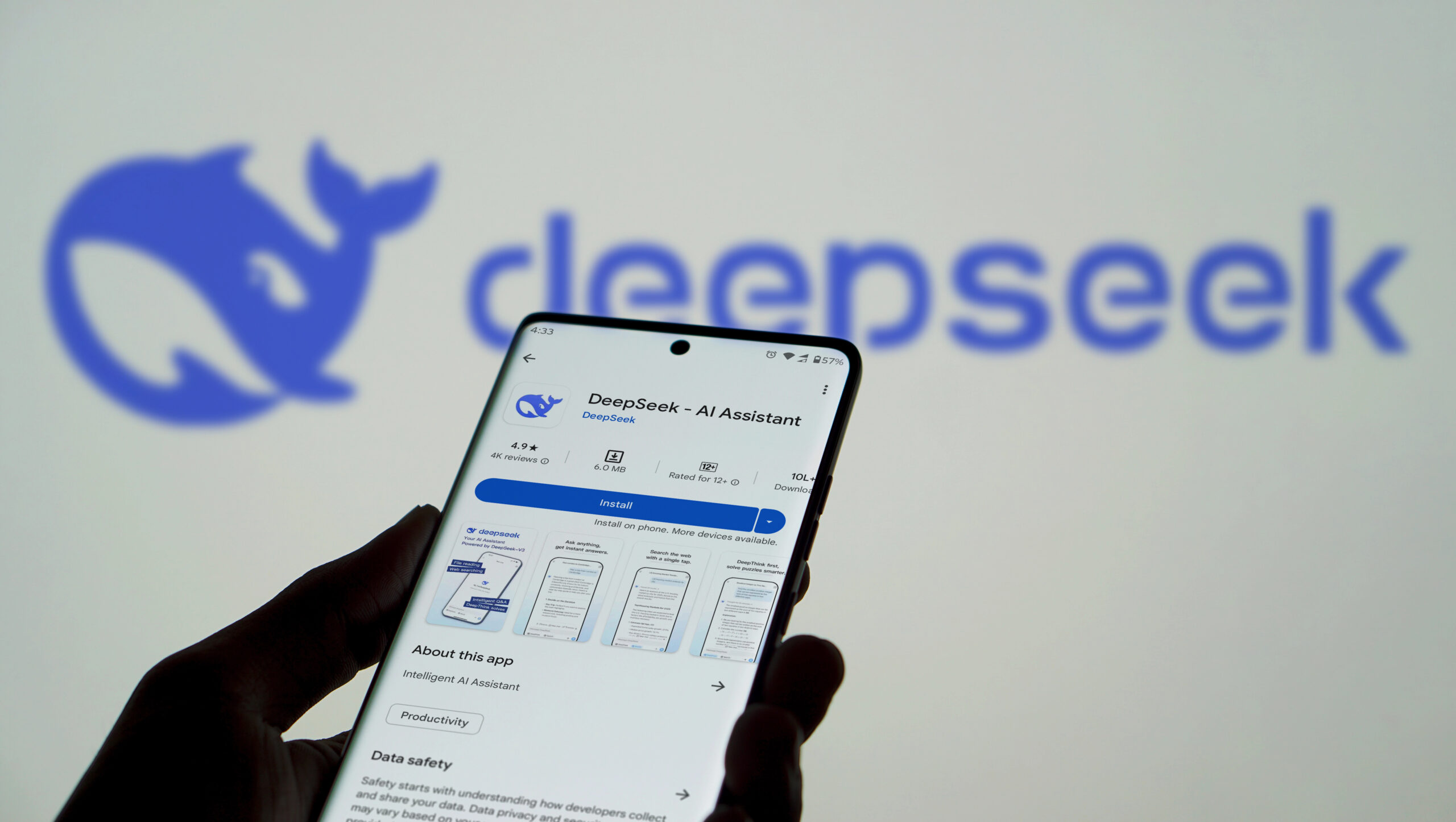As you navigate the rapidly evolving landscape of artificial intelligence, prepare to witness a paradigm shift in AI reasoning capabilities. DeepSeek, a Chinese AI startup, has unveiled a groundbreaking approach that combines Generative Reward Modelling with self-principled critique tuning. This innovative method promises to revolutionize how large language models align with human preferences, delivering faster and more accurate responses. By outperforming existing techniques, DeepSeek’s dual-tech breakthrough sets a new standard for AI reasoning. As the company prepares to open-source these models and anticipation builds for their next-generation R2 model, you’ll want to stay informed about this transformative development in the global AI arena.
DeepSeek’s Groundbreaking Approach to AI Reasoning

DeepSeek’s innovative dual-technology approach is revolutionizing the landscape of AI reasoning. By combining Generative Reward Modelling (GRM) with self-principled critique tuning, the company has created a powerful synergy that addresses two critical challenges in AI development: alignment with human preferences and enhanced reasoning capabilities.
Generative Reward Modelling: Aligning AI with Human Intent
At the core of DeepSeek’s breakthrough lies GRM, a technique that directs large language models toward human-preferred outputs. This method ensures AI responses remain accurate, while also becoming more intuitive and relevant to human users. Moreover, by integrating GRM, DeepSeek effectively narrows the gap between artificial intelligence and human-like reasoning. Consequently, their AI systems align more closely with how people think and communicate.
Self-Principled Critique Tuning: Enhancing AI’s Self-Evaluation
Complementing GRM is the self-principled critique tuning method. This innovative technique empowers AI models to critically evaluate their outputs, leading to more refined and accurate responses. By instilling this self-assessment capability, DeepSeek’s models can iteratively improve their reasoning processes, resulting in faster and more precise outputs.
The synergy between these two technologies has yielded impressive results. DeepSeek-GRM models have demonstrated superior performance in guiding LLMs toward human-aligned outputs, outpacing existing techniques in the field. This advancement marks a significant step forward in creating AI systems that can reason more effectively and produce results that are both useful and trustworthy for human users.
How Generative Reward Modeling and Self-Principled Critique Tuning Work
Generative Reward Modeling (GRM)
Generative Reward Modeling (GRM) is a groundbreaking approach that aims to align AI outputs more closely with human preferences. This technique involves training a reward model on human feedback, which then guides the language model to generate responses that are more likely to be preferred by humans. By leveraging GRM, DeepSeek’s AI can produce outputs that are not only more accurate but also more contextually appropriate and aligned with human expectations.
Self-Principled Critique Tuning
Self-Principled Critique Tuning complements GRM by enabling the AI to evaluate and refine its outputs. This method involves training the model to critique its own responses based on a set of predefined principles. By doing so, the AI can identify potential flaws or inconsistencies in its reasoning, leading to more robust and reliable outputs. This self-evaluation process helps to reduce errors and improve the overall quality of the AI’s responses.
Synergistic Effect
The combination of GRM and Self-Principled Critique Tuning creates a powerful synergy that enhances the AI’s reasoning capabilities. While GRM ensures that the model’s outputs are aligned with human preferences, Self-Principled Critique Tuning adds an extra layer of refinement and error correction. This dual approach results in faster, more accurate responses that are not only preferred by humans but also more logically sound and consistent.
Benchmarking DeepSeek-GRM: Competitive Performance and Human-Aligned Outputs
Impressive Performance Metrics
DeepSeek-GRM models have demonstrated remarkable performance in recent benchmarks, outpacing existing techniques in guiding large language models toward human-aligned outputs. These models show enhanced reasoning capabilities, delivering faster and more accurate responses across various tasks. When compared to other leading AI systems, DeepSeek-GRM consistently ranks among the top performers, showcasing its potential to revolutionize AI reasoning.
Human Preference Alignment
One of the key strengths of DeepSeek-GRM lies in its ability to align AI outputs more closely with human preferences. By synergizing Generative Reward Modelling (GRM) with self-principled critique tuning, the system has achieved a new level of understanding and interpretation of human intent. This alignment results in more natural, context-appropriate responses that resonate with users across diverse applications.
Real-World Applications and Impact
The competitive edge of DeepSeek-GRM extends beyond theoretical benchmarks into practical applications. From natural language processing to complex problem-solving scenarios, these models have shown promise in enhancing user experiences and streamlining AI-assisted tasks. As DeepSeek plans to open-source these models, the potential for widespread adoption and further innovation in AI reasoning is significant, potentially reshaping industries and accelerating technological progress.
The Highly Anticipated R2 Model: Successor to DeepSeek’s Acclaimed R1
As the AI community eagerly awaits DeepSeek’s next-generation model, R2, speculation abounds about its potential capabilities and improvements over its predecessor. The R1 model, which garnered global attention for its cost-effective performance rivaling leading models, set a high bar for its successor.
R1’s Impressive Legacy
DeepSeek’s R1 model made waves in the AI world with its ability to deliver top-tier performance at a fraction of the cost of competing models. This breakthrough democratized access to advanced AI capabilities, allowing smaller organizations and researchers to harness powerful language processing tools previously reserved for tech giants.
R2: Shrouded in Mystery
While rumors suggest an imminent release of R2, DeepSeek has remained tight-lipped about specific details. Industry experts speculate that R2 will build upon R1’s strengths, potentially incorporating the company’s recent advancements in AI reasoning methods. The integration of Generative Reward Modelling (GRM) and self-principled critique tuning could significantly enhance R2’s ability to produce human-aligned outputs with improved accuracy and speed.
Potential Impact on the AI Landscape
If R2 lives up to expectations, it could further solidify DeepSeek’s position as a frontrunner in the global AI race. The model’s release may spark a new wave of innovation in natural language processing and reasoning capabilities, pushing the boundaries of what’s possible in AI-driven applications across various industries.
The Future of AI Reasoning: DeepSeek’s Innovative Strides
Synergizing GRM and Self-Principled Critique Tuning
DeepSeek’s groundbreaking approach combines Generative Reward Modelling (GRM) with self-principled critique tuning, ushering in a new era of AI reasoning. This dual-tech strategy aims to bridge the gap between machine outputs and human preferences, resulting in more aligned and accurate responses. By leveraging these complementary techniques, DeepSeek has created a powerful synergy that pushes the boundaries of what’s possible in AI language models.
Competitive Edge in Performance
The DeepSeek-GRM models have demonstrated remarkable results, outperforming existing techniques in guiding large language models (LLMs) toward human-aligned outputs. This competitive edge positions DeepSeek at the forefront of AI reasoning technology, challenging industry giants and redefining benchmarks. The company’s commitment to open-sourcing these models further underscores its dedication to advancing the field of AI for the benefit of the broader community.
Anticipation for R2: Building on R1’s Success
As DeepSeek continues to make waves with its innovative reasoning methods, the tech world eagerly awaits the release of R2, the successor to the acclaimed R1 model. R1’s cost-effective performance rivaled leading models, garnering global attention and establishing DeepSeek as a formidable player in the AI landscape. While the exact release date of R2 remains unconfirmed, its potential to further revolutionize AI reasoning capabilities has sparked intense speculation and excitement within the industry.
Final Thoughts
DeepSeek’s groundbreaking dual-tech approach signals a major shift in AI reasoning. This innovative method boosts alignment between AI outputs and human preferences. Moreover, it sets a new benchmark for speed and accuracy in large language models. Although the full impact is still unfolding, DeepSeek already stands as a powerful force in the global AI field. Furthermore, with plans to open-source its models and possibly release the anticipated R2, more breakthroughs are likely ahead. These advancements will continue to redefine the limits of artificial intelligence.
More Stories
TikTok Empowers Users with AI-Driven Content Control Tools
TikTok is advancing digital content with AI-driven tools that give you more control over your viewing experience. On June 3,...
Nokia Powers Next-Gen PON and Wi-Fi 7 Evolution
With the introduction of their co-existence network solution, advanced Wi-Fi 7 gateways, and a high-density 25G PON line card, Nokia empowers operators to meet the increasing demand for robust, high-capacity networks.
Nordic’s nRF9151 Powers Japan’s IoT Future with NTT DOCOMO LTE-M Certification
With the recent LTE-M certification of Nordic’s nRF9151 System-in-Package (SiP), witness a transformation in cellular IoT deployment across various industries.
Perplexity Labs: Transforming Prompts into Dynamic Reports and Dashboards
As a professional in today’s fast-changing digital world, you need tools that go beyond traditional limitations. That’s where Perplexity Labs comes in—an innovative feature from Perplexity AI, available only to Pro subscribers. It turns your creative prompts into detailed reports, interactive dashboards, spreadsheets, and even full web applications.
Instagram Edits Empowers Creators with Pro-Level Mobile Video Tools
Instagram unveiled Edits, their groundbreaking mobile video editing app designed to elevate the quality of Reels and short-form videos to empower creators.
Google’s AI Edge App Brings Offline Intelligence to Your Phone
The new AI Edge App from Google reshapes mobile technology as it brings artificial intelligence directly to your smartphone.


